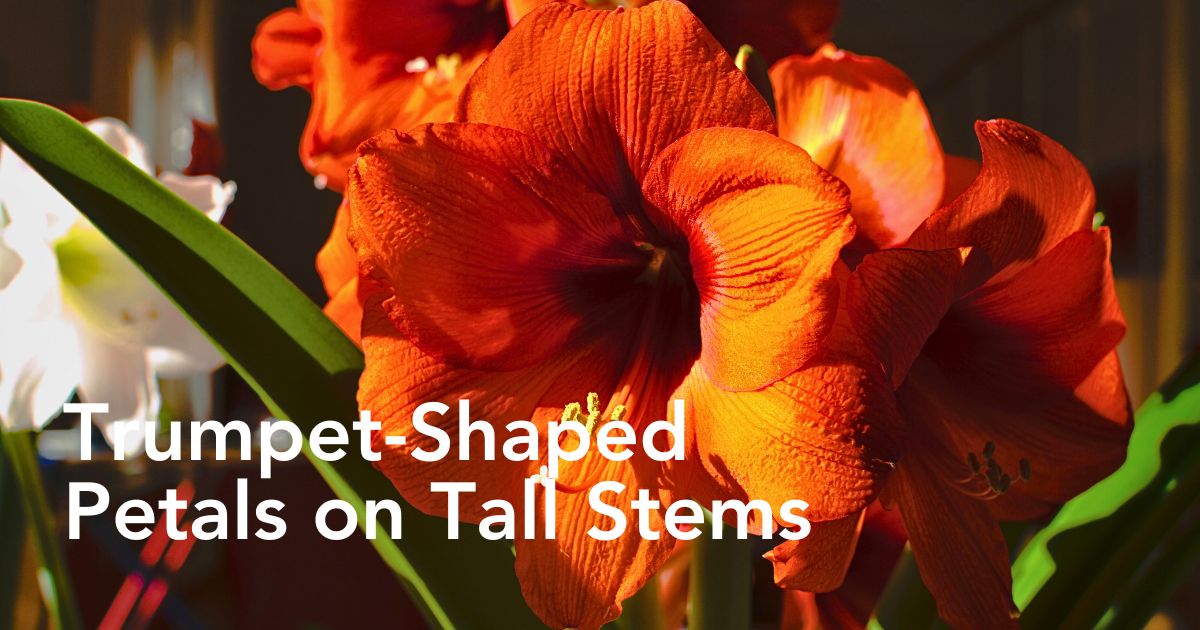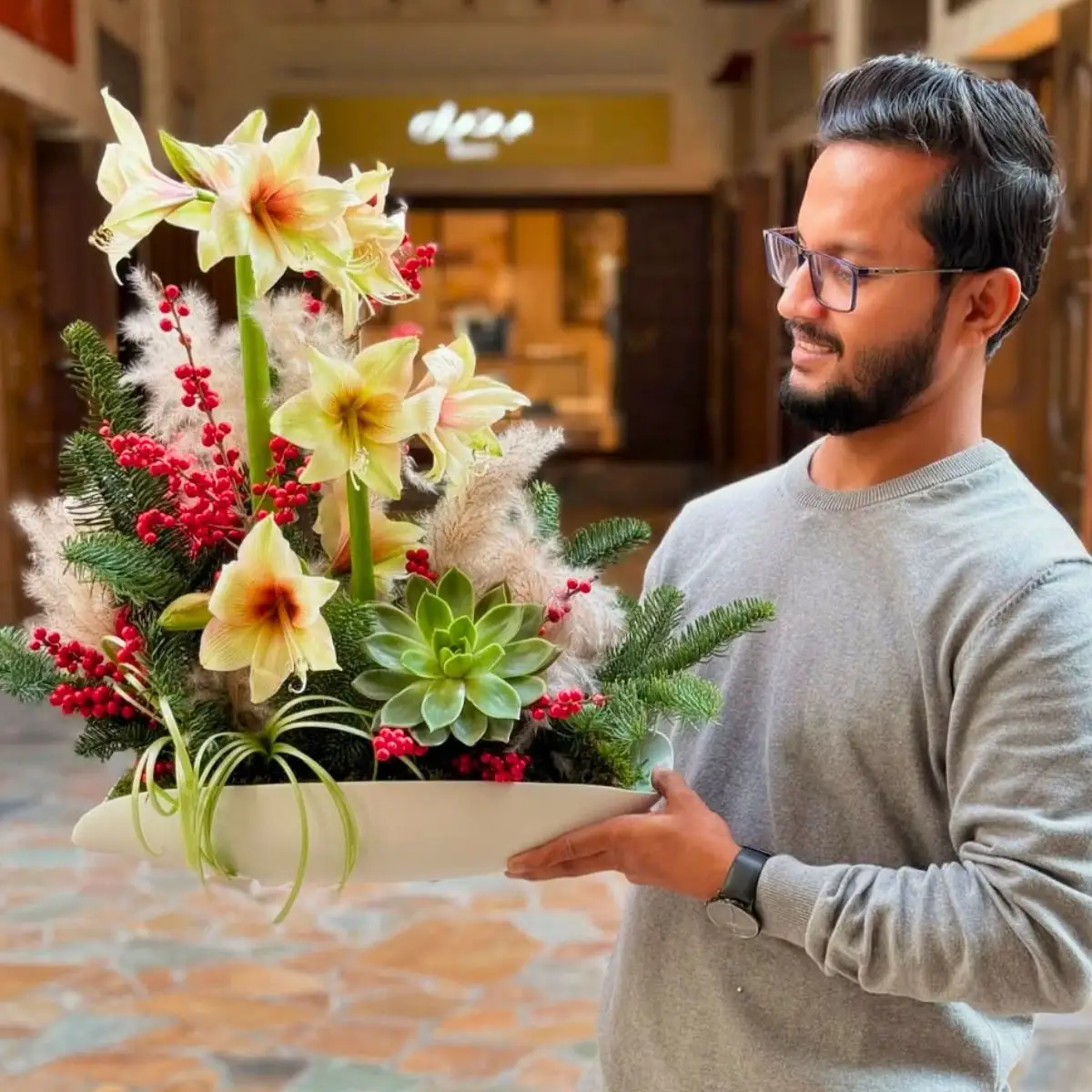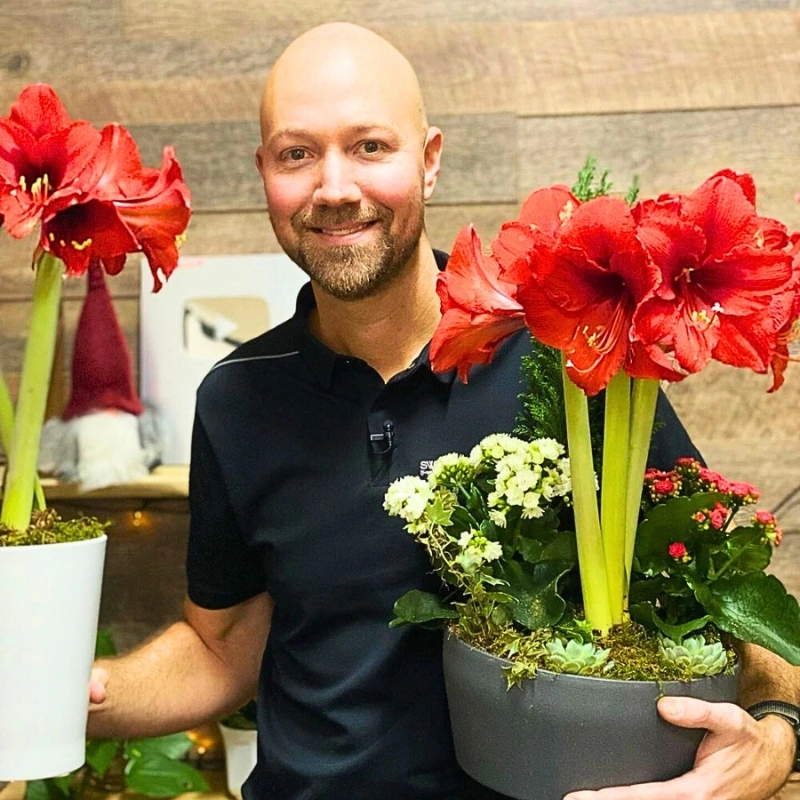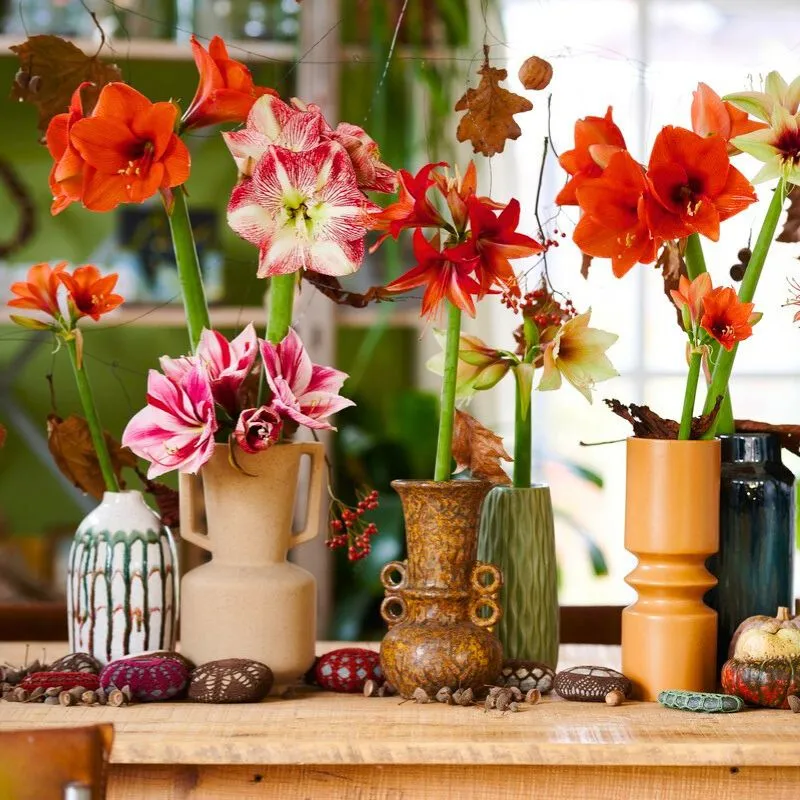Many flowers herald the coming of holiday festivities, and it so happens that Amaryllis is one of them. A harbinger of winter celebrations, there is something delightfully dramatic about the genus Amaryllis. While others quietly announce their presence, this flower, on the other hand, does not hesitate to grab attention with colorful trumpet-shaped petals and stems that stand tall, quite like they own the place.
This winter-blooming plant carries ages of horticultural history, cultural symbolism, mythology (think Ancient Greek legends and Victorian floriography), and modern holiday nuances. The general meaning of the Amaryllis flower speaks to pride, determination, and beauty that comes from struggle (think Greek mythology, and also in its thriving through wintry frost). These make it much more than just a pretty face with attitude.
Origins and Back Story of Amaryllis
Amaryllis flower meaning begins with a love story, naturally. According to a legend chronicled by Roman poet Virgil, in Greek mythology, Amaryllis was a shy shepherdess who fell hopelessly in love with Alteo, a handsome shepherd and gardener who seemed indifferent to her affection. Alteo seemed to care only about flowers and his duties. Desperate to win his heart, Amaryllis consulted the Oracle of Delphi, who told her to pierce her heart with a golden arrow and walk to his door for thirty days.

Each day, a drop of her blood fell on the path. On the thirtieth day, a crimson flower sprouted where her blood had fallen. Alteo finally noticed her. The story of Amaryllis (the shy shepherdess) tells of devotion and determination that shape much of what the Amaryllis flower means today. It also explains why the flower's name, derived from the Greek word ‘amarysso,’ means ‘to sparkle’ or ‘to shine.” The flower seems to literally catch light with its glossy petals.
The story of the Amaryllis plants is equally fascinating. It begins with geographical confusion and botanical intrigue. What we commonly call Amaryllis actually belongs to the genus Hippeastrum, native to Central and South America. True Amaryllis belladonna, known as the Belladonna lily, originates from the Western Cape region of South Africa, a rocky area between the Olifants River Valley and Knysna.

This mix-up happened in the 18th century when botanists were still sorting out plant classifications. The taxonomical tangle didn't untangle officially until the 14th International Botanical Congress in 1987, which determined that both names would remain valid for their respective regions. Today, while most holiday Amaryllis bulbs sold are Hippeastrum hybrids, the general name, Amaryllis, has, despite quite a metamorphosis, stuck for both.
How Amaryllis Spread Across the World
The genus Hippeastrum, today, contains about 90 species and over 600 hybrids and cultivars, with breeders continually developing new varieties. When European botanists first encountered these flowers in the 18th century, they fell in love with them. Carl Linnaeus, the father of modern plant classification, identified the genus in 1753, coining the name from Greek words meaning ‘knight's star,’ a fitting tribute to its theatrical, star-shaped form.

Dutch botanists became particularly instrumental in advancing Amaryllis cultivation. Having already built their reputation through tulip breeding, they saw Amaryllis as a natural extension of their horticultural expertise. They brought these flowers to Europe in the 1700s, and the continent fell hard for them, as well.
Throughout the 1800s, they refined growing methods, experimented with hybridization, and produced bulbs hardy enough to flourish indoors during Europe's harsh winters. By the Victorian era, Amaryllis had become a status symbol in wealthy households, a prized addition to private conservatories and greenhouses.

Victorian England particularly embraced Amaryllis, incorporating them into holiday celebrations and winter gardens. The Victorians, who assigned meaning to every flower, accordingly, stretched the meaning of the amaryllis flower to include pride and pastoral poetry.
By the 19th century, Amaryllis had traveled to North America, where it found its niche in Christmas traditions. It is, therefore, one of the most popular Christmas flowers. The flower’s winter blooming cycle made it perfect for holiday decorating, and commercial growers developed many more varieties. Today, the Netherlands remains the world's largest Amaryllis producer, shipping millions of bulbs globally each year. South Africa, Brazil, and the United States also cultivate significant quantities.

Amaryllis Flower Meaning and Symbolism Across Cultures
What does the amaryllis flower mean? One may ask. It all varies beautifully depending on where one is. In Western cultures, Amaryllis primarily represents pride, determination, and radiant beauty. The Ancient Greek myth reinforces themes of committed love and the lengths people go to for affection.
Still, yet, in ancient Greece, what the Amaryllis flower meant in terms of success can hardly go unnoticed. Winners of competitions and tournaments were often awarded Amaryllis as prizes, which reinforced its association with achievement and triumph. This tradition hints at something else. While the flower symbolizes beauty, it is the hard-won kind of beauty that comes after struggle and grit.

Victorian flower language added splendid beauty (as well as worth beyond beauty) to the list. Victorian-era ladies also particularly embraced Amaryllis’ symbolism, regarding the flower as a perfect representation of strong-willed, self-confident women who refused to fade into the background.
In Chinese culture, Amaryllis symbolizes good fortune and is often given as a gift during celebrations. The bold red varieties, particularly, align with Chinese associations of red with luck, prosperity, and happiness. Some Asian traditions associate Amaryllis with successful outcomes after long struggles: remember the shy shepherdess's 30-day journey?
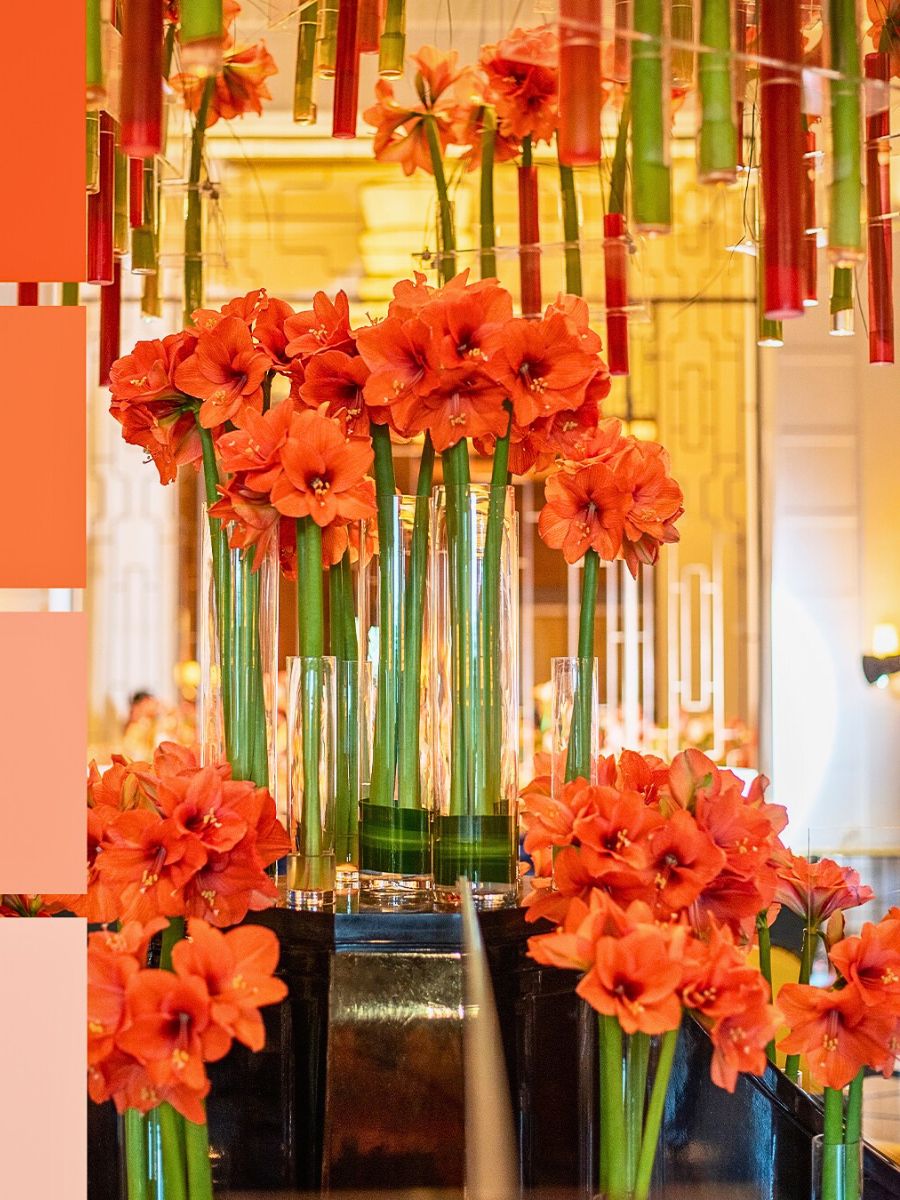
Japanese culture associates the Amaryllis (known as ‘Higanbana’ for a related species) with wisdom, acceptance of life's cycles, and the understanding that endings precede new beginnings. In Japanese floral language (Hanakotoba), Amaryllis specifically means shyness and pride, quite an interesting combination that considers the flower's bold appearance and its hidden demure nature.
South American cultures, where these plants grow wild, view them as symbols of new beginnings and transformation, which makes sense considering how quickly the bulb transforms from dormancy into a spectacular flower. Many Brazilian and Peruvian communities associate Amaryllis with spring festivals and renewal, even though in other parts of the world it is a winter flower.
Amaryllis Flower Meaning in Contemporary Settings
The meaning of Amaryllis flowers also connects to achievement and success. Corporate gifts sometimes include Amaryllis bulbs to congratulate someone on a promotion or accomplishment. The flower's ability to produce such extraordinary results from a single bulb mirrors personal growth and the pursuit of one's potential.
The bulb itself carries symbolic weight, as it often remains hidden underground, dormant and seemingly dead. This represents the potential that stays dormant within one, and when it finally pushes through the soil into a flower, it becomes an indicator of what happens when one channels their inner strength. Quite like the human journey from struggle to achievement!
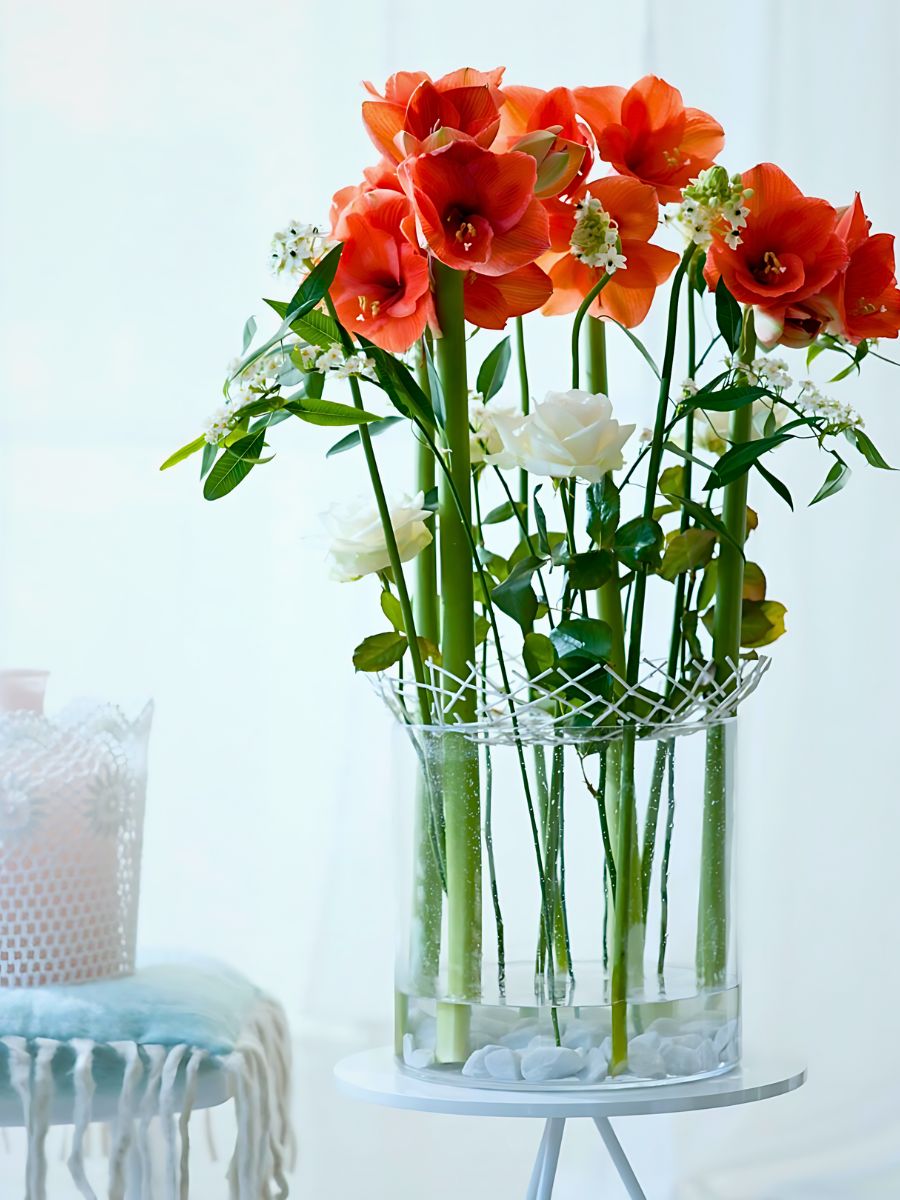
What Does the Amaryllis Flower Mean in Different Colors?
Color greatly decides what the flower of the Amaryllis means. Breeders have developed the flower in nearly every color conceivable. And each has its own message. Red Amaryllis is the most popular and represents deep romantic love, passion, and attraction. In Chinese culture, the red Amaryllis holds special significance, making it particularly popular during festive seasons. The color connects to the flower's legendary crimson origin story, grounding the color symbolism in its mythological roots.
White amaryllis conveys purity, innocence, and spirituality. They also express remembrance and sorrow, making them appropriate for more solemn occasions, such as memorials or funerals. White varieties often evoke a sense of grace and refined elegance.

Pink Amaryllis surprises many people who expect them to carry romantic meaning. Instead, these softer-hued flowers symbolize friendship, playful love, and affection: perfect for showing appreciation to friends, family members, or colleagues without romantic undertones. They are versatile enough to work for both men and women across all ages.
Orange Amaryllis projects positive energy, happiness, and good health. They make excellent houseplants if the goal is to produce good vibes and positivity throughout your home. Yellow Amaryllis symbolizes happiness, luck, and good times ahead. They are ideal for wishing someone well before an exam, a job interview, or any situation where a boost of optimism is helpful.

Purple Amaryllis connects to royalty, nobility, spirituality, and respect. Giving it to a teacher, mentor, or someone you admire conveys the honor and respect they deserve. These regal flowers also appeal to those interested in chakras and spiritual practices. Striped varieties, on their part, are sometimes associated with uniqueness and creativity.
Amaryllis’ Beauty and Symbolism in Designs and Arrangements
Why do these flowers often turn heads? Here’s why. For starters, the Amaryllis typically produces 2 to 12 flowers per stalk, each measuring 10-25 cm (4-10 inches) across. The petals form a star or trumpet shape that opens wide, almost like the flower is greeting one personally. Its colors range from pure white and soft pink to deep crimson, orange, and even striped or speckled varieties.

The stems grow incredibly tall, some reaching up to three feet, creating an architectural element. Quite unlike many flowers that droop or fade quickly, Amaryllis holds its form beautifully, sometimes lasting two to three weeks in bloom. The leaves are long, strap-like, and glossy, though they often appear after the flower, which adds to the plant's theatrical allure.
Florists love working with these flowers because of their versatility and impact. In holiday arrangements, red and white Amaryllis pair beautifully with evergreens like Ilex, creating classic Christmas displays. The tall stems make them perfect centerpieces that don't obstruct conversation at the table.

Wedding designers increasingly feature Amaryllis in winter ceremonies. White or pale pink varieties bring elegance without the expected roses, and their substantial size means fewer stems are needed for dramatic impact. Bridal bouquets featuring Amaryllis make bold statements, though they require careful handling due to the flowers' weight.
Contemporary floral design celebrates Amaryllis in minimalist arrangements. A single stem in a clear vase showcases the flower's natural architecture. Japanese ikebana practitioners particularly value Amaryllis for its strong lines and form. The stems can be manipulated slightly when young, allowing creative positioning.
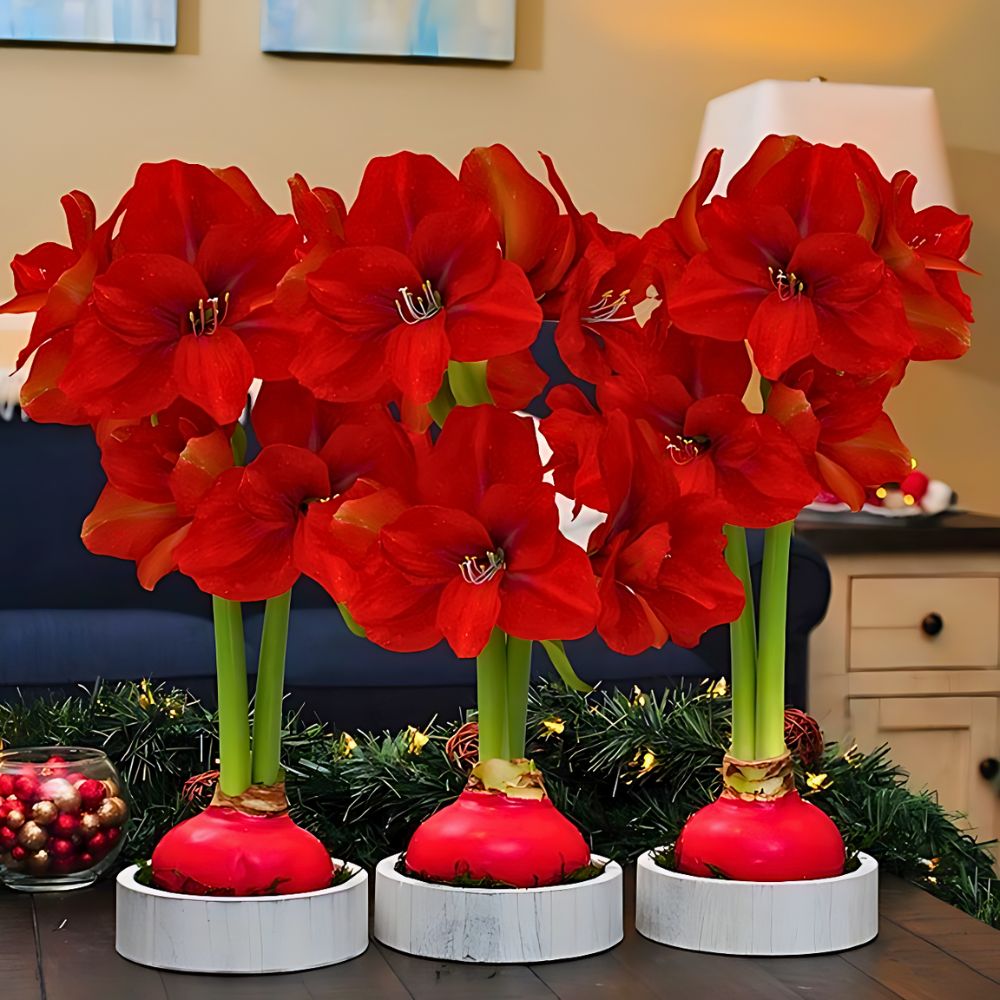
More Design Aesthetics and Pairings Enhancing Amaryllis Flower Meanings
Some designers cut Amaryllis short for low arrangements, surrounding them with moss or seasonal foliage. Others combine multiple colors for festive displays. Their conveniently hollow stems drink water efficiently, making it relatively easy to work with these flowers compared to other large ones.
For design pairings, Amaryllis works beautifully with roses, Hydrangeas, lilies, and Ranunculus for wedding bouquets or formal arrangements. For holiday displays, they shine alongside evergreens, berries, pinecones, and silver accents. Spring arrangements work well, combining Amaryllis with tulips and daffodils for a fresh, seasonal feel.
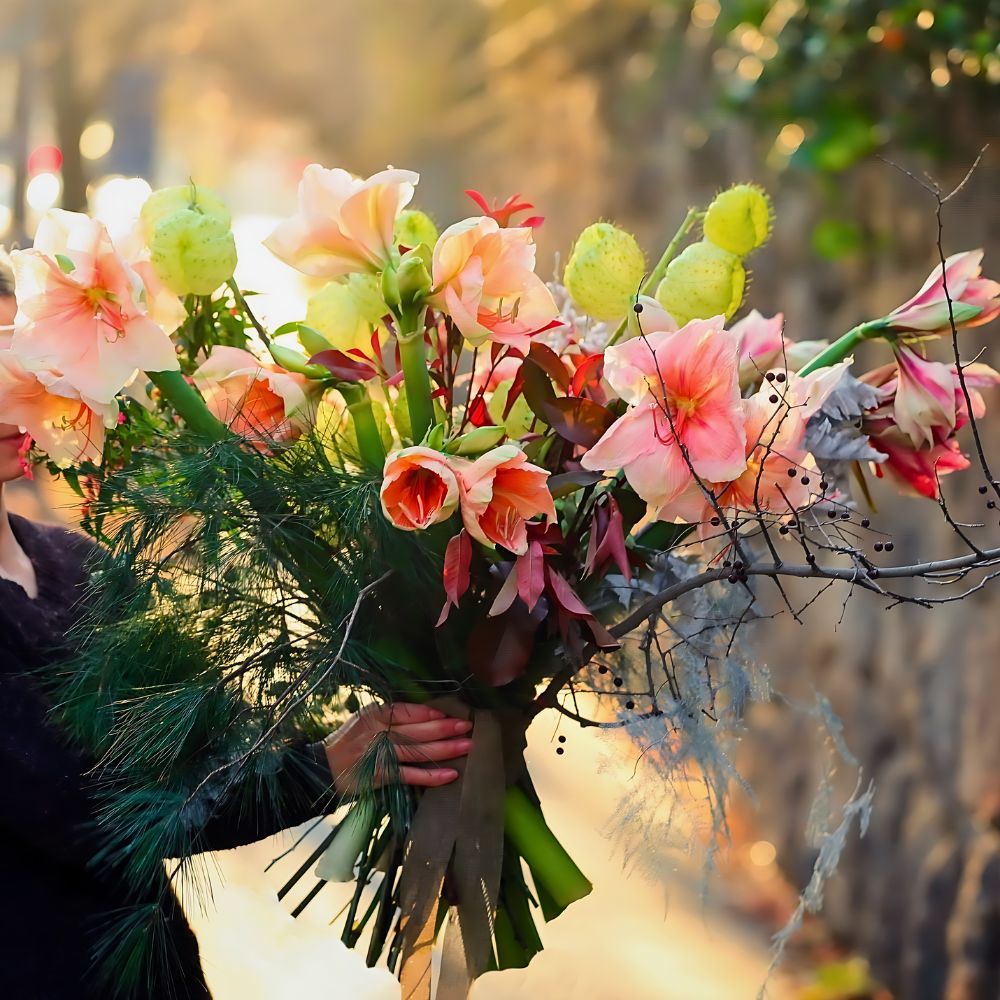
Also, notably, miniature Amaryllis cultivars have revolutionized small-scale design work, allowing florists to incorporate these flowers into tighter, more intimate arrangements, while double-flowering varieties add texture and fullness, and bicolor and striped cultivars create visual interest without requiring different flower types. Perhaps you should try them and discover the uniqueness of the Amaryllis in the coming months.
Header image by Frank Eiffert. Reel by @petervandelft.flowers

